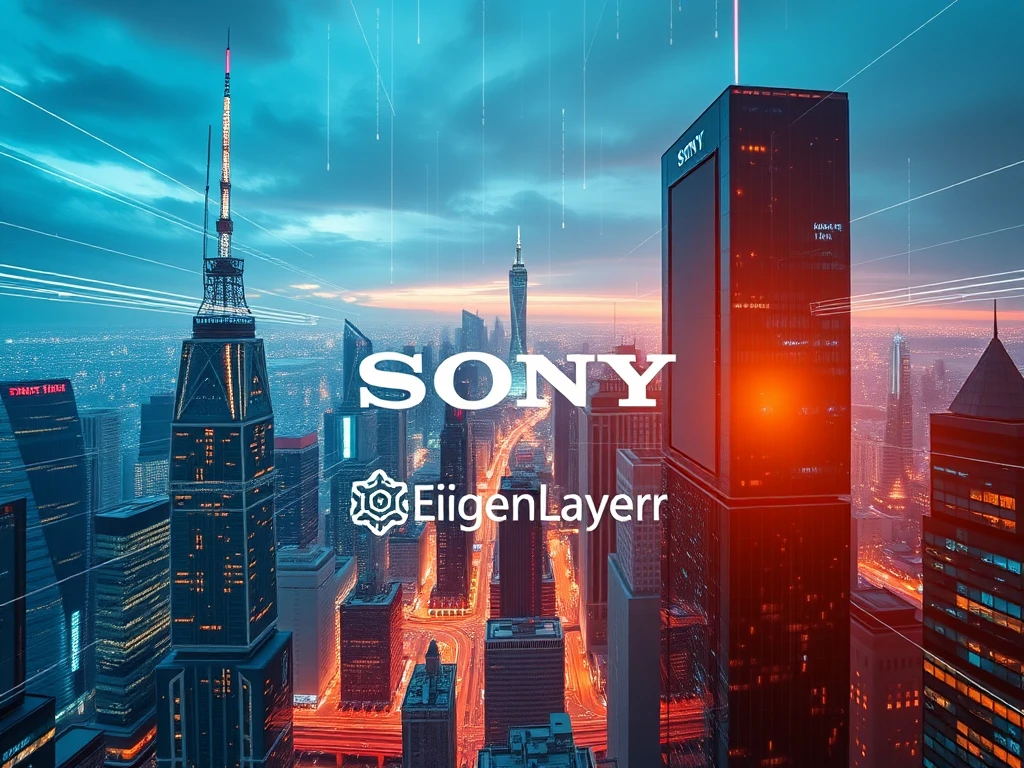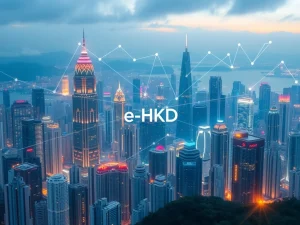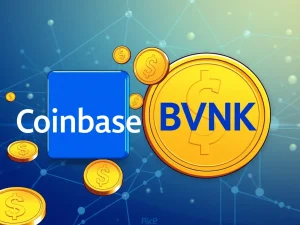Revolutionary: Sony Soneium Unlocks Sub-10 Second Blockchain Finality with EigenLayer

In a revolutionary leap for blockchain technology, Sony’s Web3 arm, Sony Block Solutions Labs, has announced a groundbreaking advancement for its Soneium layer-2 network. By strategically partnering with EigenLayer and AltLayer, Soneium has achieved an astounding feat: reducing blockchain finality time to under 10 seconds. This represents a staggering 98% reduction from its previous 15-minute finality, effectively tackling a major bottleneck hindering widespread blockchain adoption.
Why is Blockchain Finality Important? Understanding the Need for Speed
For those new to the crypto space, blockchain finality might sound like technical jargon. However, it’s a critical concept that directly impacts user experience and the potential of blockchain applications. In simple terms, finality is the guarantee that once a transaction is confirmed on the blockchain, it is irreversible and cannot be altered. Think of it as the moment a payment is truly settled and can’t be retracted.
Traditionally, achieving finality in many blockchain solutions can be a slow process, sometimes taking anywhere from 15 minutes to several days. This delay creates significant hurdles for:
- Decentralized Finance (DeFi): Fast and secure transaction speed is paramount for DeFi applications like trading, lending, and borrowing. Delays in finality can lead to inefficiencies and risks.
- User Experience (UX): Imagine waiting 15 minutes for a simple transaction to be fully confirmed. This sluggishness creates friction and discourages mainstream users from adopting blockchain technology.
- Cross-chain Interoperability: Secure and rapid finality is essential for seamless interactions between different blockchains. Delays can complicate and slow down cross-chain transfers and operations.
- Real-time Applications: Building interactive, real-time applications on blockchain requires near-instant transaction speed. Delayed finality makes such applications impractical.
Sony’s Soneium, recognizing these challenges, set out to drastically improve its blockchain finality, and their partnership with EigenLayer and AltLayer is the key to this success.
The Power Trio: Sony Soneium, EigenLayer, and AltLayer – A Strategic Alliance
The magic behind Soneium’s speed boost lies in a strategic collaboration with two prominent players in the blockchain infrastructure space: AltLayer and EigenLayer. Astar Network, a Japanese Web3 collective bridging Astar Network and Soneium, played a crucial role in orchestrating this alliance to launch a “Fast Finality Layer” for Sony’s layer-2 blockchain.
Let’s break down the roles of each player:
- Soneium (Sony Block Solutions Labs): The layer-2 blockchain network developed by Sony, aiming to enhance scalability and adoption. Soneium initially utilized Optimism’s OP Stack, achieving a 15-minute finality.
- EigenLayer: A protocol built on Ethereum that introduces the concept of restaking. EigenLayer allows for the crypto-economic security of Ethereum to be extended to new applications and services. In this case, it provides a decentralized network of validators to enhance the security of Soneium’s finality layer.
- AltLayer: A platform focused on making rollups more accessible and powerful. AltLayer contributes its expertise in fast and secure layer-2 solutions, working with EigenLayer to deliver near-instant finality.
This partnership is not just about speed; it’s about enhancing security and decentralization. The new finality layer leverages a decentralized network of validators, secured by restaked Ether (ETH) and Astar (ASTR) tokens. This reduces reliance on centralized sequencers, a common concern in some layer-2 solutions, and strengthens the security of cross-chain interactions.
Sub-10 Second Finality: A Game Changer for Layer-2 Scaling
The result of this collaboration is nothing short of impressive. Soneium now boasts a sub-10 second blockchain finality, a 98% improvement. To put this into perspective, consider the current landscape of layer-2 networks. While Arbitrum One and Coinbase’s Base L2 network are among the fastest, they still average around one minute of finality, according to L2beat data. Soneium’s achievement significantly outpaces these benchmarks, positioning it as a leader in layer-2 scaling and speed.
Maarten Henskens, head of Astar Foundation, emphasized the significance of this breakthrough, stating it’s a “crucial step toward secure, high-speed, crosschain interoperability.” He highlighted the improved user experience, noting that users no longer need to second-guess transaction reversals, and developers can confidently build real-time applications without finality concerns.
The Broader Impact: Mainstream Adoption and the Future of Web3
YQ Jia, CEO of AltLayer, aptly points out that solving blockchain finality is paramount for mainstream Web3 adoption. By combining EigenLayer’s restaking with MACH validation and Astar Network’s support, they are creating an infrastructure that offers both Ethereum’s robust security and near-instant finality. This is precisely the kind of solution needed to bridge the gap to mainstream users.
Transaction speed and security are often seen as competing priorities in blockchain. Soneium’s achievement demonstrates that with innovative solutions and strategic partnerships, it’s possible to achieve both. This development has far-reaching implications:
- Enhanced DeFi Ecosystem: Faster finality paves the way for more sophisticated and efficient DeFi applications, attracting more users and capital.
- Improved User Experience: Near-instant confirmations make blockchain interactions feel seamless and intuitive, crucial for mass adoption.
- Unlocking New Use Cases: Real-time applications, gaming, and other interactive experiences become viable on blockchain, expanding the possibilities of Web3.
- Developer Empowerment: Developers can build with greater confidence, knowing that finality delays will not hinder the performance of their applications.
Looking Ahead: What’s Next for Soneium and Fast Finality?
While sub-10 second finality is a monumental milestone, it’s just the beginning. As Maarten Henskens mentioned, a larger story is unfolding around how fast finality will reshape developer UX, DeFi, and crosschain experiences. Sony Soneium, with its enhanced speed and security, is poised to be at the forefront of this evolution.
The industry will be watching closely to see how this advancement translates into real-world applications and user adoption. Will this breakthrough be the catalyst for a new wave of Web3 innovation? The answer seems increasingly likely as layer-2 scaling solutions like Soneium continue to push the boundaries of what’s possible with blockchain technology.
Key Takeaways:
- Sony’s Soneium layer-2 blockchain has achieved sub-10 second finality, a 98% reduction, through a partnership with EigenLayer and AltLayer.
- Blockchain finality is crucial for user experience, DeFi, cross-chain interoperability, and real-time applications.
- EigenLayer provides crypto-economic security through restaking, enhancing the decentralization and security of Soneium’s finality layer.
- This breakthrough positions Soneium as a leader in transaction speed among layer-2 networks.
- Faster finality is a key enabler for mainstream Web3 adoption and unlocks new possibilities for developers and users alike.
The race for faster, more scalable, and secure blockchains is on, and Sony Soneium’s latest achievement is a significant leap forward in this exciting journey.







